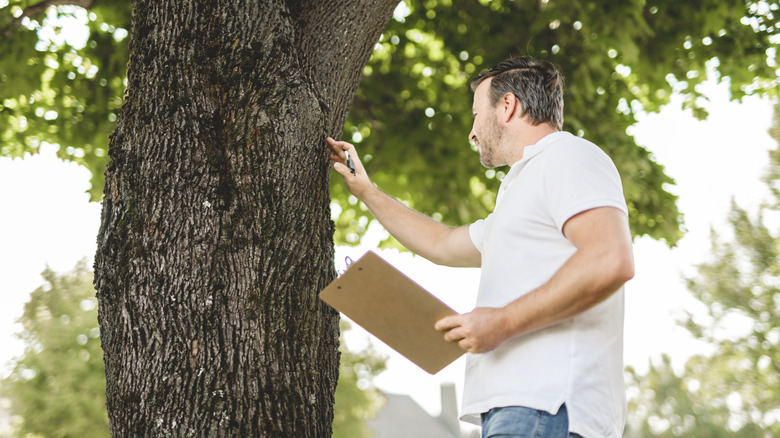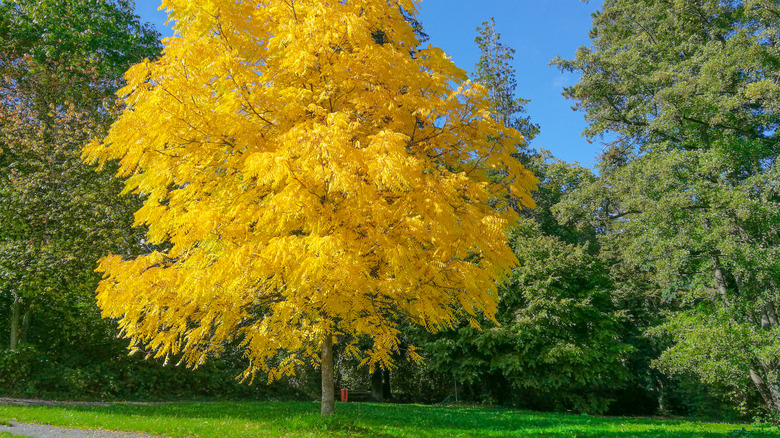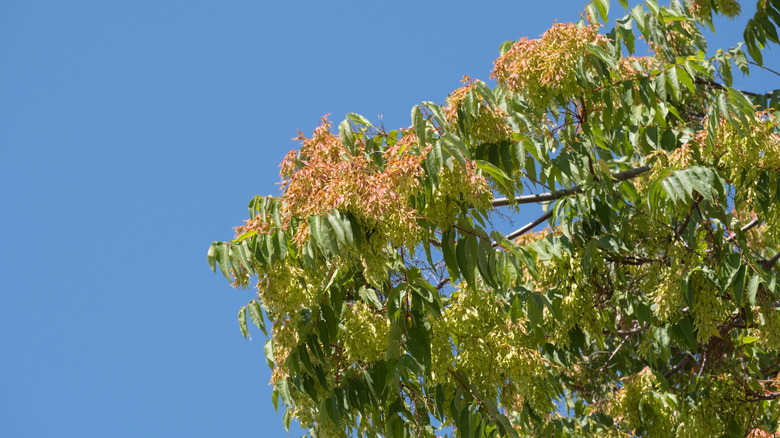Don't Confuse This Invasive Tree For Its Native Lookalike
Many plants look similar, and while sometimes this results in a harmless case of mistaken identity, other times it could have disastrous consequences for you and your garden. Even experts sometimes confuse one plant for another. There are many native North American species that are mistaken for invasive plants and vice versa, which is why it's important to pay close attention to the plants' differences. You may think you have a native black walnut (Juglans nigra) tree growing in your yard, when in fact you're actually plagued by the invasive tree-of-heaven (Ailanthus altissima).
Considering tree-of-heaven's divine title, you might be wondering why it's such a big deal to have it in your garden as opposed to black walnut. While not all non-native plants are considered invasive, tree-of-heaven is classified as invasive in over 30 states, which makes it a problem for your garden. When tree-of-heaven grows, it does so rapidly, choking out the native plants around it. This damages the ecology of your yard, which can negatively impact the animals and insects that rely on those native plants for food and shelter. Black walnut, on the other hand, can bring a bountiful harvest to your yard and offers much-needed shade in the summer.
How to differentiate black walnut from tree of heaven
Though black walnut and tree-of-heaven are often mistaken for each other due to a similar leaf shape and desired habitat, there are ways to tell them apart. The biggest giveaway as to the trees' identities comes around during their fruiting stages. While black walnut will produce large, rough, green-hulled nuts that are delicious when cracked open to reveal the meat within, tree-of-heaven produces seed clusters, or samaras, that are light and easily carried on the wind.
If it's not the right time of year for fruiting, how do you tell the trees apart? In mature trees, you can take a look at their bark for the answer. A black walnut tree will have rough, coarse bark marred by pronounced vertical ridges, but tree-of-heaven's bark is smooth and thin. The leaves of both trees look similar from a distance, but if you get a close look at them, you'll see that the leaflets from a black walnut tree are finely serrated, while tree-of-heaven's leaflets only have a few teeth at the base. Another clue that you're dealing with tree-of-heaven is the smell. When crushed, the leaves and stems of the tree release a nutty but unpleasant odor, while black walnut leaves have a more pleasant, citrusy aroma.
Managing (or removing) tree of heaven
Tree-of-heaven was introduced to the United States by a gardener who brought the plant from China to Philadelphia, Pennsylvania, in 1748, but you should un-introduce it to your garden as soon as possible. The tree produces an extensive root system, so the earlier you catch it, the better, as it can re-sprout from roots that have grown beneath your lawn. Cutting down the tree doesn't solve the issue, as you'll just see more shoots sprouting up. Instead, control the tree by targeting the roots with herbicides. Treat the roots in the summer, when the tree is in its growing season, to ensure the herbicides are drawn into the tree's root network.
If you've found yourself dealing with tree-of-heaven, don't panic, because you can safely remove this invasive plant species from your lawn and garden. After applying the herbicide, wait at least 30 days before cutting down and removing the tree. You will need to continue to monitor the area and hit any emerging root suckers with herbicide. While you can try removing the tree yourself, it is better to consult a professional tree removal team who will know how to handle the cutting and disposal of the tree.


